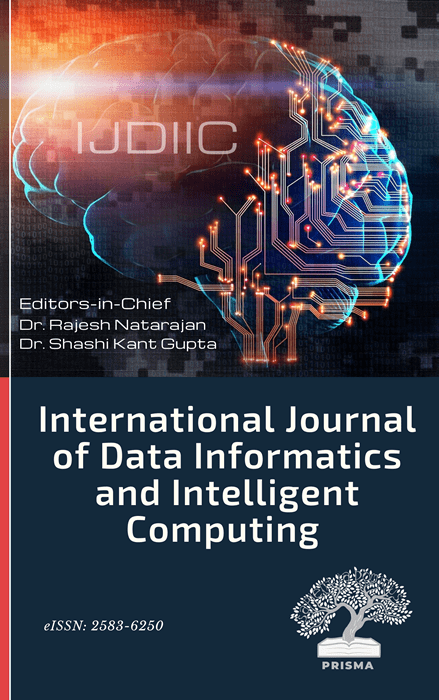A Systematic Survey of Classification Algorithms for Cancer Detection
DOI:
https://doi.org/10.59461/ijdiic.v1i2.32Keywords:
Cancer detection, Machine learning techniques, Logistic regression (LR), Naïve Bayes (NB), K-nearest neighbors (KNN), Decision tree (DT), Support Vector MachinesAbstract
Cancer is a fatal disease induced by the occurrence of a count of inherited issues and also a count of pathological changes. Malignant cells are dangerous abnormal areas that could develop in any part of the human body, posing a life-threatening threat. To establish what treatment options are available, cancer, also referred as a tumor, should be detected early and precisely. The classification of images for cancer diagnosis is a complex mechanism that is influenced by a diverse of parameters. In recent years, artificial vision frameworks have focused attention on the classification of images as a key problem. Most people currently rely on hand-made features to demonstrate an image in a specific manner. Learning classifiers such as random forest and decision tree were used to determine a final judgment. When there are a vast number of images to consider, the difficulty occurs. Hence, in this paper, we analyze, review, categorize, and discuss current breakthroughs in cancer detection utilizing machine learning techniques for image recognition and classification. We have reviewed the machine learning approaches like logistic regression (LR), Naïve Bayes (NB), K-nearest neighbors (KNN), decision tree (DT), and Support Vector Machines (SVM).
Downloads
Downloads
Published
How to Cite
Issue
Section
License
Copyright (c) 2022 Ashish Kumar Pandey, Prabhdeep Singh

This work is licensed under a Creative Commons Attribution-ShareAlike 4.0 International License.








